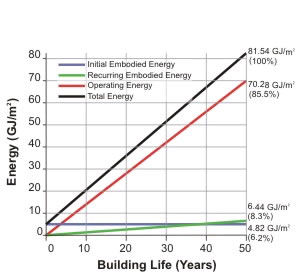Cellulose can improve energy efficiency in a few ways.
Much less initial embodied energy than it’s competition; on the order of 9 times less than fiberglass and as much as 35 times less than polystyrene insulation.
Can greatly reduce the operation energy through increased R- Value
Some studies suggest that cellulose insulation in combination with a thermal mass could reduce residential energy needs by as much as 25% saving between .2 and .4 quad btu’s per year
In a residential sector, the largest energy hogs are space heating and water heating.
We can reduce this energy demand by combining the use of passive solar space heating, solar thermal water heating, and super insulated buildings.
